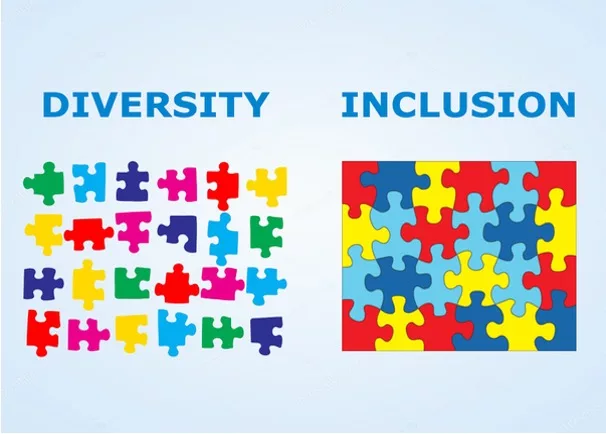More and more companies have become hyper-aware that being diverse and inclusive isn’t just a fleeting trend or an initiative to aspire to someday. It is a core competency that demands real attention, as there are tremendous benefits derived from businesses and organizations that embrace diversity and inclusion. I'm sure many dealers and businesses may have asked the question "Why should my company care about diversity and conclusion?"
Well, the answer is diversity and inclusion will not only provide positive benefits to your business but will also allow you to add value to the product and service experience you provide to your customers. In fact, there's a report from McKinsey & Co. that showcases how diverse businesses are strongly correlated with profitability and value creation. The report also outlines and shows how diverse businesses are 33% more likely to outperform their peers on profitability.
In this 3-part series, we're going to dive into the business case around diversity, address the myths, and define the concept. We will also share several examples (with tangible results) of successful businesses that embrace this critical concept and how diversity and inclusion will help dealers improve their business performance and allow them to capture new markets and customers.
Diversity & Inclusion Myths
I'd like to address several diversity and inclusion myths so that we can level-set our discussion from the beginning. Let's first discuss the notion that diversity and inclusion are quota-driven. Well, it is not about quotas, nor is it an empty check-in-a-box concept. Diversity and inclusion focus on helping you build better teams to help you take your business to the next level that requires commitment at the top, training, support and metrics.
The second myth we need to dispel is that "Diversity and inclusion are one in the same thing." The answer is they are not the same by definition, however, they are interconnected. In addition, research shows that when both concepts are understood, put into action, and implemented, these interconnected concepts will change your culture and your business.
The third myth is that it only focuses on gender and race. Diversity and inclusion consider gender and race and more, as it is much broader than these two elements. Those who are unaware of this truth will be surprised by the broadness of its definition which includes age, religion, life experiences, beliefs, education level, personality traits, and other human traits & differences.
The fourth myth I wanted to address is that diversity and inclusion is a win/lose proposition. When embraced, committed, and implemented, everyone wins with diversity and inclusion — your business, your employees, your markets, and your customers.
The fifth myth is that diversity and inclusion focus on others or “them.” The answer is that diversity and inclusion is not one group or “them.” It's about everyone, which means us.
The last myth is that diversity and inclusion is a social-driven (feel-good) initiative that has zero impact on the business's bottom line. There are many examples that we will showcase and detail how diversity and inclusion will strengthen your business purpose, and positively affect your bottom line and brand image.
Now that we have addressed the myths, let's shift our attention to defining diversity and inclusion.
Defining Diversity & Inclusion
What is diversity? Diversity is the characteristics, experiences, and other distinctions that make one person different from another. Simply put, diversity is the 'what' in the equation. It focuses on the make-up of your workforce demographics such as gender, race, age, geographic and background experiences.
Most people understand diversity on the surface level. However, diversity means much more than that because it extends beyond what is visible and addresses what is not visible. Diversity is very broad when defined. It represents a broad range of experiences such as race and ethnic background, age and generation, nationality, skills and life experience. It also includes expertise/skill level, disability, religious and spiritual beliefs and more.
Now, let's explore what inclusion is. Earlier, we defined diversity as the “what” and in contrast, inclusion is defined as the “how.” Inclusion is how well contributions, presence, and perspectives of the different groups of people are valued and integrated into an environment. It’s about how people feel welcomed and valued at work.
Inclusion is the measure of culture that enables diversity to thrive. When people feel safe and welcome at work, they're far more open and engaged. They're better able to take risks. They are also more likely to ask for help, which has a positive impact on collaboration, productivity and problem-solving.
In summary, diversity and inclusion are more than just policies, programs or headcount. They are interconnected. Diversity cannot exist without inclusion. There is a quote I love that speaks to this concept and defines it well, which says, "Diversity is the mix and inclusion is making the mix work."
When employees feel more connected at work, they tend to work harder and smarter and will produce higher-quality work. Employees who feel included are more positively engaged within the organization and your bottom line is going to thank you for embracing this tangible and measurable result.
In Part 2, we’ll examine why diversity and inclusion should matter to you, your business, your market, and your customers.
Related Content
Part 2: 3 Reasons Why Diversity & Inclusion Should Matter to Your Dealership
Part 3: 3 Ways Your Dealership Can Benefit from Diversity & Inclusion



.webp?height=254&t=1755550502&width=198)



